In May, Alison M. Jones, Executive Director of our international partner organization No Water No Life, gave a talk in Tewksbury Twp. on the upstream-downstream issues of the Raritan Basin. Alison writes: “The audience was surprised – and then concerned – about the issues faced in the Lower Raritan and that some of the problems flowed down from the Upper Raritan.” After hearing Alison speak, one member of the audience was inspired to write an article for The Bernardsville News comparing the upstream-downstream disconnect in the Raritan Basin to the problems that led to Flint, Michigan’s drinking water debacle.
As in Michigan, in New Jersey we also face a state government willing to accept the public health risks of ignoring – and even compromising – necessary drinking water protections. The Christie administration has put new regulations into effect that will loosen the state’s clean water rules, opening up close to 400,000 acres of sensitive lands to development. While maintaining the integrity of upstream lands is clearly important for communities at higher elevations, the new regulations will have especially dire public health impacts on the state’s historically impaired and poorer downstream areas including the Lower Raritan and Raritan Bay. By opening up upstream lands to development, our downstream areas face compromised drinking water supplies, intensification of flooding, and increased water contamination associated with stormwater flows.
Senator Bob Smith, sponsor of Bill SCR66 that would invalidate Christie’s revisions to the Flood Hazard Control Act rules, has successfully pushed his bill through the Assembly and Senate Committees. There is significant support in the Senate for the bill, including from former Governor Tom Kean, the final hurdle is for Senate President Stephen Sweeney to post the bill to a vote in the full Senate today.
It is not news to our Lower Raritan communities that water, and all attendant pollution, runs downhill. The daily work in our downstream areas must address the clean-up of not only legacy industrial contamination but also non-point-source pollutants that are carried from upstream. The LRWP has been part of a statewide campaign to support Smith’s bill and to encourage Sweeney to post this bill for a vote in Senate, but successfully addressing historic and ongoing threats to the health of our downstream areas will require new and ongoing forms of regional cooperation. Clean drinking water and the health of our communities is at stake.
Photos and Writing by Joseph Sapia
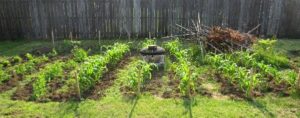
GARDEN AND AFIELD
2016, June 19, Sunday, to 2016, June 25, Saturday
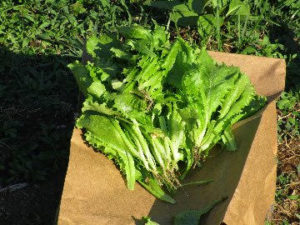
Lettuce
HARVESTING FROM THE GARDEN: I began picking lettuce, harvesting it leaf by leaf, rather than by the head, so the plant keeps producing. (In my haste, I pulled out too much leaf. So, next time, will clip them, saving the plant.) Then, I either munch on the leaf right there in the garden or take it inside for a sandwich.
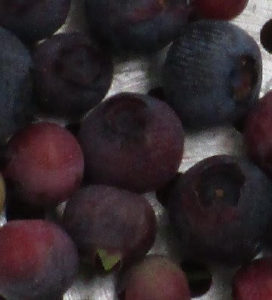
Wild blueberries
HARVESTING FROM THE LOCAL PINE BARRENS: Blueberries are ripening. I picked some the other day and mixed them into a cup of yogurt.
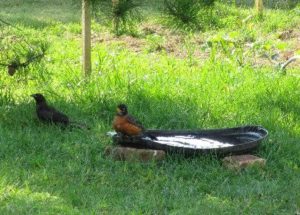
Bird bath
BIRD BATH: I keep a bird bath filled with water at ground level. Birds not only “bathe” in it, but birds and other animals drink from it.
WILDLIFE IN THE YARD: The raccoons are still taking advantage of the sunflower kernels in the bird-feeder. And, one evening, I saw a huge skunk passing by.
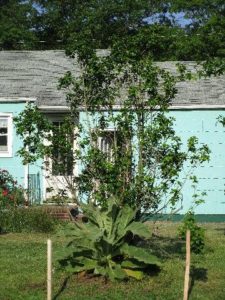
Mullein in front of the American holly
WEEDS IN MY YARD: As I have mentioned, I leave many weeds growing to see what they develop into. Well, I have a huge mullein taking over my American holly in my backyard. In the front yard, I have pokeweed growing.
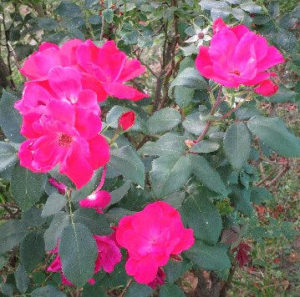
“Knock Out” roses
“KNOCK OUT” ROSES: Surprisingly, the first bloom of “Knock Out” roses continues.

Fungi in the backyard
FUNGUS, IN YARD AND WOODS: Fungi growing in my backyard and some in the local Pine Barrens.
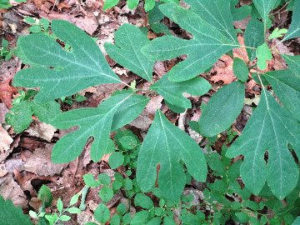
Sassafras with its three styles of leaves
SASSAFRAS IN THE LOCAL PINE BARRENS: Sassafras trees can have three leaf patterns on the same tree: a two-prong mitt, three-prong, and oval. I found an aberration this week, one with five prongs.
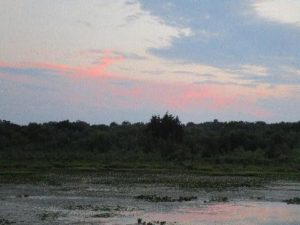
Helmetta Pond at sunset
Joe Sapia has been a professional journalist since the 1970s. He also is a writing teacher, folk artist, vegetable gardener, Pine Barrens woodsman, Helmetta area historian, and Jeep driver, along with being Marquette University Jesuit-educated..
Born in 1956, Joe is a lifelong resident of Central Jersey, where his family — through his maternal side, the old Polish and Slovak workers of the George W. Helme Snuff Mill in Helmetta — has lived since about 1900. He is a voice of the land and Old Jersey ways.
NJ DEPARTMENT of ENVIRONMENTAL PROTECTION
LAND USE MANAGEMENT
Notice of Rule Proposal
Flood Hazard Area Control Act Rules, N.J.A.C. 7:13
Coastal Zone Management Rules, N.J.A.C. 7:7
Freshwater Wetlands Protection Act Rules, N.J.A.C. 7:7A
PUBLIC NOTICE
Take notice that the New Jersey Department of Environmental Protection (Department) is proposing amendments and new rules in the Flood Hazard Area Control Act (FHACA) Rules, N.J.A.C. 7:13, Coastal Zone Management (CZM) Rules, N.J.A.C. 7:7 and Freshwater Wetlands Protection Act Rules, N.J.A.C. 7:7A. The proposed amendments and new rules fall into the following six categories: improvements to riparian zone protections; improving consistency of the FHACA Rules with the Uniform Construction Code (UCC) and National Flood Insurance Program; improving consistency between the FHACA Rules and CZM Rules; facilitation of environmentally beneficial activities; clarification that permits-by-rule, general permits-by-certification, and general permits may not be used for activities qualifying as “major development;” and changes regarding the fees associated with the review of stormwater calculations.
The proposal is scheduled to be published in the New Jersey Register dated June 20, 2016. A copy of the proposal is available athttp://www.nj.gov/dep/rules/proposals/20160620a.pdf and from LexisNexis free public access to the New Jersey Register,www.lexisnexis.com/njoal.
A public hearing concerning the proposal is scheduled. The public hearing, as indicated in a notice of rescheduling of public hearing to be published in the July 5, 2016 New Jersey Register, is scheduled as follows:
Friday, July 22, 2016 at 10:00 A.M.
NJ Department of Environmental Protection
Public Hearing Room
401 East State Street
Trenton, NJ 08625
Article and photos by Joe Mish

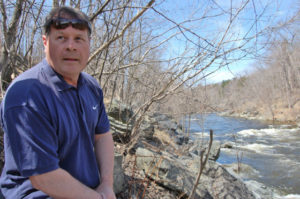
If shadows and footprints were indelible and double exposures across time possible, you might be able to see Henry David Thoreau standing next to Joe on the shore of the Raritan River in New Jersey and the rocky streamside of the Kenduskeag in Maine. Each contemplating the wonder of nature where others might not see anything of value or beauty.
I always lived within sight of where the Raritan flows, the river being a reference point in my life. So embodied in my psyche is the river, that when at the recent 8th Sustainable Raritan River Conference at Rutgers, mention of the words, ‘Raritan River’ by one of the academic speakers felt as if it was me he was talking about. In reality the cumulative agenda was revealing the natural treasures hidden in plain view that I had discovered as a wayward youth and fondled as an adult through a newspaper column and photos.
The Raritan River basin drains about 1,100 square miles of New Jersey. The main Raritan River and bay is the summation of the North and South branches and their tributaries. I hunted ducks and trapped muskrats on the tidal creeks in season and for the rest of the year roamed the area exploring its history, geology, flora and fauna.
My interest in local nature only grew, as the gravitational pull of curiosity generated by this region’s unique natural diversity, drew me deeper into science and fostered an appreciation of its inherent beauty.
Years later I moved up river along the South Branch, fascinated by the thought of the river system as a watery highway. I paddled throughout the year and twice to Raritan Bay.
Eventually the South Branch became a training venue for the Kenduskeag Stream Canoe Race in Bangor Maine. Starting in January each year I would paddle an 11 mile stretch of river several times a week to get in shape for the 16.5 mile canoe race in Maine, which is held in mid April. I ran that race for 20 years, 18 straight years without interruption. Who knew this connection held a significant piece of a puzzle I didn’t know I was putting together.
At some point along the way, when doing research on the Raritan, I came across a history of Perth Amboy, a town located at the mouth of the Raritan River. Its list of astounding historic firsts also included a who’s who of famous visitors; Henry David Thoreau’s name was casually noted. That was very interesting, though just an isolated bit of information.
It was when I began to participate in the Maine canoe race that a coincidence hit me like a lightning bolt. Thoreau’s name came up again, this time linked to the Kenduskeag Stream and Bangor. The lights started to flash, Perth Amboy and Bangor, two river towns prominent in my life.
For those who don’t know, David Henry Thoreau, better known as Henry David Thoreau, or HDT, by his followers, is relevant today for his writings, diaries and environmental awareness. Among his best known works are ‘Walden’, ‘Civil Disobedience’, ‘Walking’ and ‘The Maine Woods’. An abolitionist and anarchist closely associated with Ralph Waldo Emerson, Louisa May Alcott and a lesser known association with Marcus Spring and Eagleswood.
Eagleswood was a utopian society established in Perth Amboy and the focus of Thoreau’s month long visit to New Jersey in October through November 1856. The visit was facilitated by Louisa May Alcott’s father, Bronson Alcott. Thoreau was hired to lecture the Eagleswood society and do a land survey.
I began to research Thoreau, Eagleswood and the Bangor Connection as I seemed to be a kindred spirit of Thoreau, as assessed by some that know me.
If footprints and shadows were indelible, HDT and I would have been physically bumping into each other. I wasn’t following in Henry’s footsteps as much as I was crossing them.
There is a great article by, Wayne Dilts, a New Jersey resident and member of the Thoreau Society who describes Thoreau’s NJ visit. Wayne’s article is found in the Thoreau Reader and titled, “Thoreau’s New Jersey Connection”; http://thoreau.eserver.org/jersey.html
Reviewing other sources for Henry’s actual diary entries for October 25th through mid November 1856 I discovered Thoreau had wandered about 2 miles west of Eagleswood, which placed him directly in the wilds I once roamed.
“Nov 2nd – Took a walk 2 miles W of Eagleswood – the quercus palustris or pin oak, very common there…”
Thoreau goes on to describe the plants, soil and topography he observed. One entry that really hits home are his words; “I see apparently the sea side goldenrod lingering still by the Raritan River”
This entry stunned me.
Here was a revered philosopher and man of nature, who transcended Walden Pond and Massachusetts to be embraced by the world and relevant for more than a century and a half to the environmental movement, said the magic word, “Raritan River”. This was the first time I experienced what I described earlier at the Sustainable River Conference, an independent discovery of our natural treasures hidden in plain view. My secret world exposed a century and half ago and still viable today.
A further look into the Thoreau, Bangor and Kenduskeag connection, bought more surprises and mingling of footsteps and shadows.
Bangor was at the edge of civilization in Maine and served at the trailhead for Thoreau’s Maine Journey to Mount Katadin via the Penobscot River with his Indian guide, Joe. Thoreau was later to say Joe was one of just a couple of people he most admired.
Thoreau also had cousins in Maine who were friends of the Pratt family. One document I read, and cannot now find as a reference, mentioned Henry and his cousin being invited to dinner at the Pratts.
As it turns out, it was the Pratt family in Bangor who hosted me each April during the Kenduskeag stream canoe race. The connection between the Pratt families in Bangor, then and now, seems to have been lost, but the parallel experiences of two out of state visitors in Bangor are wild coincidence.
“…….the impetus for Thoreau’s interest in Bangor and the northern Maine woods were his cousins Rebecca Jane Billings and Mary Ann Thoreau Billings, and aunt Nancy (Thoreau) Billings, who lived in the Queen City.”
The shore along the lower Kenduskeag, where it empties into the Penobscot River in Bangor, also marks the finish line of the canoe race. Coincidentally there are two mandatory portages around the old flour mill dam and a natural ledge which forces racers to carry their boats along the same path Henry walked.
“During his travails to Bangor, Thoreau often hiked along the Kenduskeag Stream and noted the plant and flower life along its shores.”
http://bangorinfo.com/Focus/focus_kenduskeag_stream.html
Henry’s last word as he died on May 6th 1862 was ‘moose’. Coincidentally my last word as I left Maine, after an unsuccessful month long archery moose hunt, was ‘moose!’, followed closely by the guttural inflection, ‘grr’. I waited more than thirty years to get drawn in the Maine moose lottery and went home with a consolation prize of 15 pounds of moose meat from a sympathetic donor, knowing full well that was my last breath of a chance at a Maine moose.
As I was finally completing this article, which had been simmering for more than two years, a hummingbird, the first one I had seen this season, flew up to the window, where I sat and stared at me for several seconds before flying off. I took that as a sign Henry was nearby and impressed by the coincidence of our footsteps and shadows.
Author Joe Mish has been running wild in New Jersey since childhood when he found ways to escape his mother’s watchful eyes. He continues to trek the swamps, rivers and thickets seeking to share, with the residents and visitors, all of the state’s natural beauty hidden within full view. To read more of his writing and view more of his gorgeous photographs visit Winter Bear Rising, his wordpress blog. Joe’s series “Nature on the Raritan, Hidden in Plain View” runs monthly as part of the LRWP “Voices of the Watershed” series. Writing and photos used with permission from the author.
Check out these pics from June 16, 2016 water quality monitoring in the Englishtown area of the LRW. Waters were bright orange in color with very low pH (3.8):
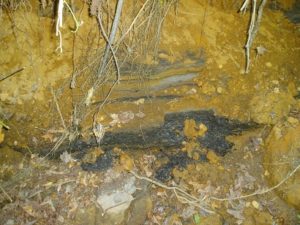
Upstream was an eroding bank with charcoaled, black wood:
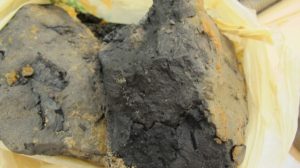
What’s going on here? This is an acid-producing deposit from the Englishtown Geologic Formation. According to Stephanie Murphy, Director of Rutgers Soil Testing lab: “When deposits are buried (not exposed) the mineral is iron sulfide and pH is not “unusual”. It can have black color. When exposed, the extreme acidity results from certain microbes oxidizing the sulfide to sulfate with H+ produced. Same process with acid coal-mining spoils. Acidity makes iron soluble, and when it re-deposits/precipitates, you get the orange hues.”
Also see the NJ Geological Survey’s Figure 1-1. NJ sedimentary units with potential to produce acid:
http://www.state.nj.us/dep/njgs/geodata/dgs09-2.htm
Photos and article by Joseph Sapia
Afield observations made in the Pine Barrens around Helmetta in South Middlesex County. Garden observations made in my yard, just outside of Helmetta.
THE GARDEN. Planted vegetables, cantaloupe, and flowers, all from seed, May 21. Sweet corn, cucumbers, and sunflowers are sprouting well. The tomatoes are just peeking through the soil.
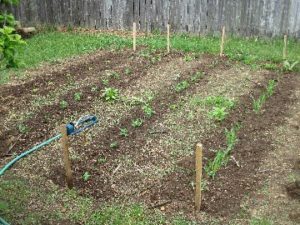
GARDENING CHORES. Planted black-eyed Susan seeds, finished lawn-mowing, weeded the garden, been watering the garden.
WATERING THE GARDEN. I use no fertilizer and no chemicals — to me, things ruining the local Pine Barrens ecosystem and time bombs in the soil and groundwater. But I water, a soaking preferably before 10 a.m., so less loss of water to evaporation in the sun’s heat and allowing the vegetation to dry so as not to pick up fungal growth. If I miss the pre-10 a.m. watering, I will try to water with a sprinkling can, low to the ground, underneath the vegetation.
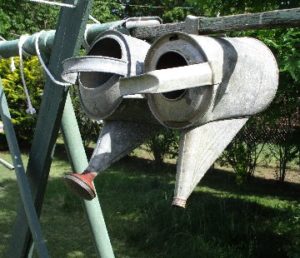
WATER CONSERVATION. Since taking over the family house in 2002, I have cut my water consumption in half for the most part. Some can be attributed to a needed bathroom remodeling (and a water-efficient toilet), but a lot is from simple conservation — do not run as much water, along with re-using gray water and rain water for watering plants. This week, for example, I watered the garden with a combination of house water and gray water, hoping to switch entirely to rain water and gray water.
MORE WATER CONSERVATION. Water from the cellar de-humidifier goes to the bird bath/watering trough. The trough, too, is recycled — a garbage can lid place on the ground, easy for birds to use, as well as squirrels and so on.
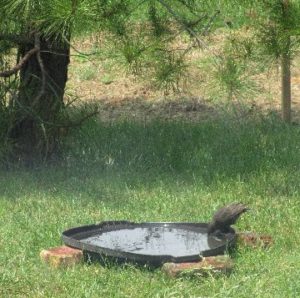
RACCOON AT THE BIRD-FEEDER. My friend continues to visit the bird-feeder, helping itself to the sunflower kernels. I let it do it for a good part of the night, then I put the feeder in the garage for the overnight.
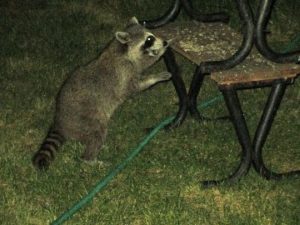
WILDLIFE AND ME. Un-rhythmic chirping crickets in my cellar in the middle of the night bring out the serial killer in me — wait till later this summer when that starts up!. But, generally, wildlife is very welcome in my yard (if not my house). This week, though, a raccoon, which I normally get within 7 or so feet of as I let it raid my bird-feeder, would not leave my garage after I startled it and it hid behind tools and so on. I poked around with a stick and finally gave up, left the doors open, and curled up on the love seat in the house until I heard rattling, meaning the raccoon was in the garbage can holding the bird seed. So, I got up, and shooed it away. Earlier, while weeding, I saw a rabbit — whose kind let me get within 5 feet or so — eating my sunflower sprouts. The hand-weeder in my hand flew across the garden. Get it? The rabbit surely understood.
WILD ON MY SIDE. Neat on the street side and neighbor side. I let my hedges and shrubs have a wild or English garden look facing inward. But I try to keep it neat on the public and neighbors’s sides. And I keep a number of wild patches in my side and back yards, making the best out of unproductive lawn ecosystems (photo 9) (I am puzzled by parents that worry about school bus stops, un-shoveled snowy sidewalks, and overcrowded classrooms, but do not worry about the chemicals on their lawns. Time bombs, I say, time bombs!)
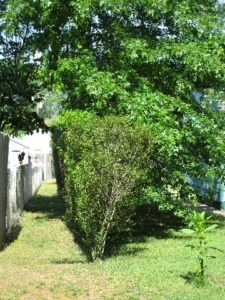
AROUND THE YARD. The season’s first bloom of Knock Out roses is wilting. Fungi (photos 11 and 12), mullein, and pokeweed sprout freely. I let this stuff grow, interested in how it looks.
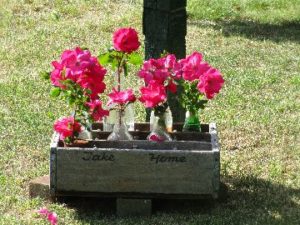
— WHAT IS GOING ON? In recent weeks, I have seen a brown thrasher (first I have seen in around 15 years), then I heard a whip-poor-will calling at my house (the first in an estimated 6 years), and, this year, the northern gray treefrogs have been hollering. Is nature coming back to the local Pine Barrens? Is the natural world becoming so condensed that nature is retreating internally? Does it mean anything?
— AND MOUNTAIN LAUREL IS BLOOMING Meaning turtles are out laying eggs, so be careful while driving. (And be careful: Do not pick them up by their tails and WATCH OUT FOR THE SNAP OF A SNAPPING TURTLE.) For the more fainthearted naturalists, the mountain laurel blooming is sort of an alarm clock that the woods will heat up, get muggy, and pine flies will be swarming.
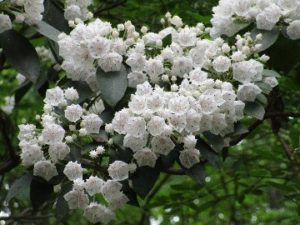
— MY INSIDE GARDEN. The view from my desk.
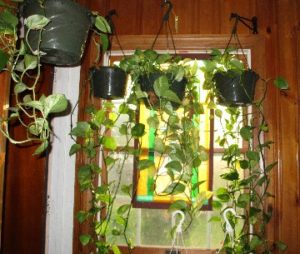
Copyright 2016 by Joseph Sapia
Joe is kicking off a new Facebook.com group, “The Jersey Midlands,” where this report is first published. To access The Jersey Midlands, go to the group and request access.
Joe Sapia, 59, is a vegetable gardener, who gardens the same backyard plot as did his Italian-American father, Joe Sr., and his Polish grandmother, Annie Poznanski Onda. Both are inspirations for his vegetable gardening. And he draws inspiration on the local Pine Barrens from his mother, Sophie Onda Sapia, who lived her whole life in the local Pines, and his grandmother.





















